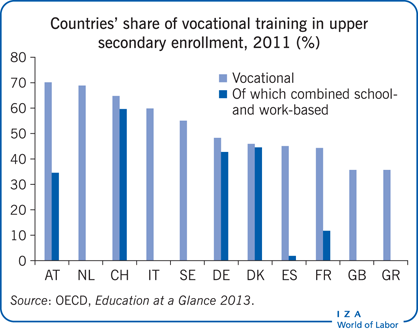Elevator pitch
Youth unemployment has increased in many industrialized countries following the recent global recession. However, this reflects not only the cyclical shock, but also the crucial role of institutions in structuring the transition from school to work. Vocational training, in particular in a dual form combining vocational schooling and structured learning on-the-job, is often considered to be one of the most important policy solutions in combating youth unemployment. The evidence available supports this perception, but the institutional requirements of a successful training system also have to be taken into account from a policy perspective.

Key findings
Pros
Vocational education and training at the secondary level can ease the transition from school to work while supplying employers with trained workers.
Dual vocational training, which combines structured learning on-the-job with classroom training, leads to certified skills that are relevant to employers and portable in the labor market.
Countries with strong vocational training programs are in a better position to avoid rising youth unemployment, even in difficult times.
Cons
A successful dual vocational training system is not easy to implement on a large scale because it requires complex institutional and cultural foundations.
To be sustainable and have a major impact, dual vocational training needs to be actively supported by a sufficient number of employers, trade unions, and policymakers, which takes time to develop.
Vocational training is not a panacea or a quick fix to bring down high youth unemployment.